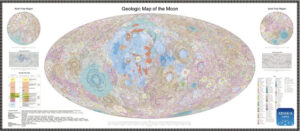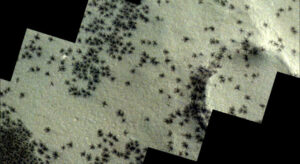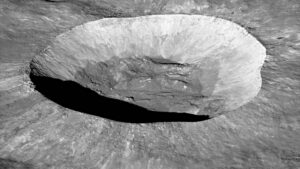Outer space is the gift that keeps on giving, particularly on Halloween. Earlier this week, NASA gave us a treat in the form of an image from Jupiter. It showed us a Picasso-esque face staring directly at the cameras on the Juno space probe. However, there is much more to come.
The ‘Hand of God’
Today, we had a glimpse of the “Hand of God.” This special nebula is a remnant of a dead pulsar star which exploded approximately 1,600 years ago. After the explosion, leftover matter, anti-matter, a very strong magnetic field, and charged particles formed a pattern which looks like a cosmic palm with fingers.
The remnant star in the middle of the palm looks almost like part of a divine being. The nebula’s name, PSR B1509-58, is about as dull as its appearance is riveting.
NASA’s X-Ray Polarimetry Explorer telescope captured both the vivid colors and the levels of polarization. Here, low polarization and high turbulence created the elaborate shape.
Volcanic skull in the Sahara
NASA also caught an image resembling a skull from a low Earth orbit. Deep in the Sahara, within the Tibesti Massif around Chad and Lybia, an eerie shape appeared within the Trou au Natron caldera. The eyes and nose are separate cones within the caldera, while the white crust is carbonate salts. This forms when mineral-rich volcanic steam evaporates in the desert heat.

Skull in the Sahara. Photo: NASA
Nazgul in space
The NASA All-Sky Fireball Network is a network of cameras on the ground pointing up to capture meteors shooting across our night sky. Currently, 15 cameras across the U.S. constantly monitor meteors.
One of the cameras captured this image earlier this month. It shows a meteor with a hooded figure resembling a ghost or a Nazgul from Lord of the Rings.

In the lower right-hand corner, a creepy astronaut goes on a space walk. Photo: NASA
Past Halloween Treats
On previous Halloweens, NASA has given us other spectacular images. In 2019, they captured a photo of the surface of the sun that resembled a diabolical Jack o’ Lantern.

The sun as Jack o’ Lantern. Photo: NASA
Lastly, the Vela pulsar nebula smiles at us from 1,000 light-years away. This image was released earlier this year. This nebula has a higher polarization and a well-organized electromagnetic field, thus the more traditional circular shape compared to the Hand of God.

Vela pulsar wind nebula looks like a smiling face. Photo: NASA
All of these are examples of pareidolia, a phenomenon in which our brains make sense of what we see by adding meaning. We often see faces and shapes in objects that are completely random. Nevertheless, these displays are fun to look at.






